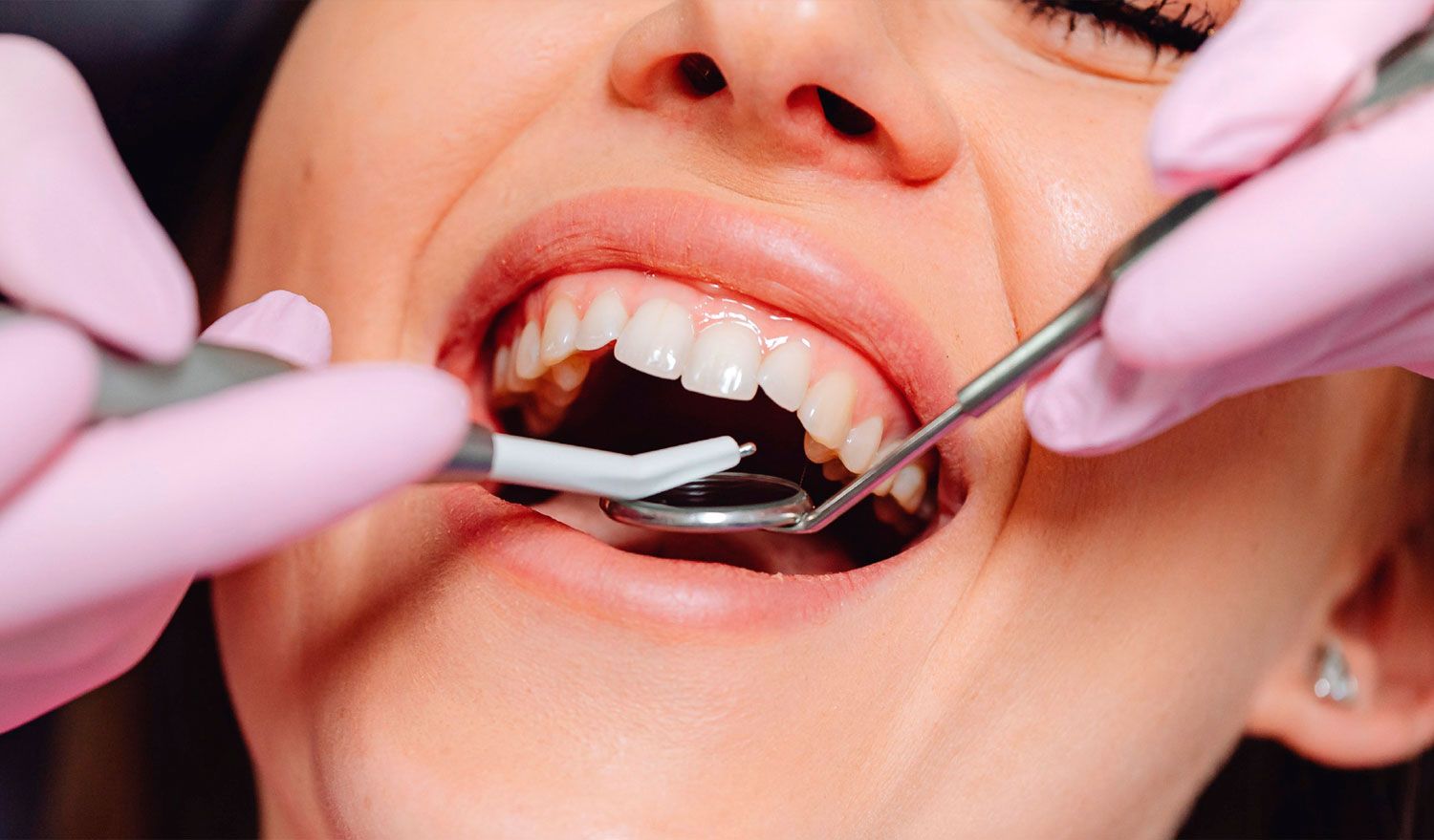Dentures (removable prosthesis)
Removable dentures are one of the most common solutions for replacing missing teeth. They can be used when some teeth are missing; a partial denture, or when all teeth are missing; a complete denture. The quality and appearance of dentures are much better today than in the past. Often, it's virtually unnoticeable that someone is wearing dentures.
Partial dentures: plate or frame dentures
If you've lost some teeth, a partial denture can improve your ability to bite, chew, and speak. It can also improve the appearance of your teeth and protect your remaining teeth from wear and decay. Without a partial denture, your natural teeth can become crooked or move. Depending on the material used to make the partial denture, it's also called a plate or frame denture.
The treatment
Impression of your teeth
To ensure a perfect fit for the denture, the dentist first takes an impression of your current teeth using a special impression material. A dental technician uses this impression to create a plaster model. This model is then used to develop an acrylic resin model. The dentist places this model in your mouth to determine the position of your jaws in relation to each other. The dentist will then adjust this model so the dental technician knows how your teeth should fit together. The dental technician will adjust the denture accordingly.
Trial Denture
A trial denture is first made, which the dentist will fit in your mouth. Before making any final adjustments, the dentist will ask you how the denture fits, feels, and looks. The trial denture is then fully finished by the dental technician. After this, the denture is ready for use. The dentist will place the dentures immediately after the teeth have been removed. This way, you won't have to walk around without teeth. It also serves as a kind of bandage for the wounds.
Appointment after Denture Placement
After a few weeks, the dentist will schedule a new appointment with you to assess how you are coping with wearing the dentures. If there are any problems, the dentist can make minor adjustments.
Denture Material
Full dentures are made of acrylic (plastic). Partial dentures can also be made entirely of acrylic (plate dentures). Sometimes they are made of a combination of acrylic (for the teeth) and metal (for the frame). This is called a partial denture. A frame denture is easier to secure and less bulky. However, a frame denture is considerably more expensive.
Cleaning your dentures
If you have dentures, it's wise to keep them clean. Here are a few tips for keeping your dentures clean:
Clean your dentures daily;
You can use special cleaning agents and a denture brush to clean your dentures. It's important to rinse your dentures before putting them back in your mouth;
Clean your dentures in a bowl of water or over the sink. If you drop them, there's less chance of damage;
Brush your jaw and tongue with a regular toothbrush;
If your dentures aren't in your mouth (for example, at night), store them in clean water or a cleaning agent;
Don't use toothpaste for cleaning, as it's too abrasive for your dentures.
Getting used to dentures
Dentures will feel different from your own teeth, and it takes some time to get used to them. Initially, you may experience some painful spots called pressure sores. It's important to keep your dentures in and schedule an appointment with your dentist to address the problem. Keep your dentures in your mouth at night for the first week. After that, it's best to remove them at night.
Source: KNMT
Opening hours
-
Mon – Fri.:
08:00 - 12:00 uur
13:00 - 17:00 uur


